
How are fashion brands solving their biggest challenges?
A few months ago, the OmniShop team decided to dive into the fashion industry and explore its online world. We had many interviews arranged with fashion brands that are taking over the scene.
The goal of this research was to learn and understand the industry better.
As we’re creating mobile apps for online fashion stores, we wanted to get better insights into how we can improve our solution to help businesses achieve their goals. At the same time, we wanted to share what we learned from this research with fashion brands and individuals who might find it useful for their businesses.
In addition, this research was a great way for small and medium businesses (SMBs) to share their stories about their beginnings and challenges. Also, they get the chance to share their opinions and statements with a wider audience.
What questions did we ask?
Our research aimed to gain a comprehensive understanding of the fashion industry. To achieve this, we posed a series of questions to representatives from various fashion brands.
Among the most important questions were those about the brand’s story, its origins, values, and mission, and the challenges it has faced in the highly competitive fashion market. We also inquired about the brand’s level of satisfaction with its current e-commerce solution and its definition of success in the industry. We also aimed to understand the brand’s openness to innovation and readiness to adapt the technological advancement.
By analyzing the responses to these questions, we tried to identify the biggest challenges faced by fashion brands in the e-commerce space and develop solutions to address them. The resulting report will focus on the most significant obstacles faced by these brands and provide insights into how they can overcome them to achieve greater success in the digital marketplace. So here are more details on the most important questions.
What is the story behind your brand?
Understanding the story behind a brand was important for our research and was the first question we asked. According to research (Canto, 2023), 55% of people say they’re more likely to buy a product if they love the story behind the brand. Exactly this inspired us to pay attention to the brand’s stories.
Understanding the story behind a brand from a customer’s perspective was a way to learn how much brands are aware of the importance of communicating the right words to their audience. Building the right connection with customers is crucial for success.
How would you define success?
Apart from the fact that this was one of the most interesting questions, it really helped us understand the vision and goals of each brand. Some of them gave us pretty exact numbers, and some of them had less factual goals. That was a great way to meet the people leading the team toward their mutual goal.
What is the biggest challenge for your business?
Asking brand representatives about their biggest challenge was very useful for the future of OmniShop. As the needs of our clients (and the ones that could be) change, we try to adapt our solution or at least prioritize what feature will be built next. That way, we’re there to support their business growth and the industry’s demands.
Are you satisfied with your current e-commerce solution?
We had the opportunity to meet with brands that have been on the market for over a decade and the younger ones. Digitalization and technological changes affected e-commerce in a great way. Some brands stayed loyal to their first solution, which isn’t very good for pleasing high-demanding customers, and others kept their web shops up-to-date as the demands changed. We asked our participants to share their satisfaction with their current online presence.
Are you ready for innovations in e-commerce?
OmniShop is strongly connected with digital transformation. The fashion industry is experiencing a revolution, and many brands are embracing changes and are ready for innovations. On the other hand, there are brands that still operate very smoothly with the old-school method. This question was the way to determine how much digital transformation is crucial for fashion brands.
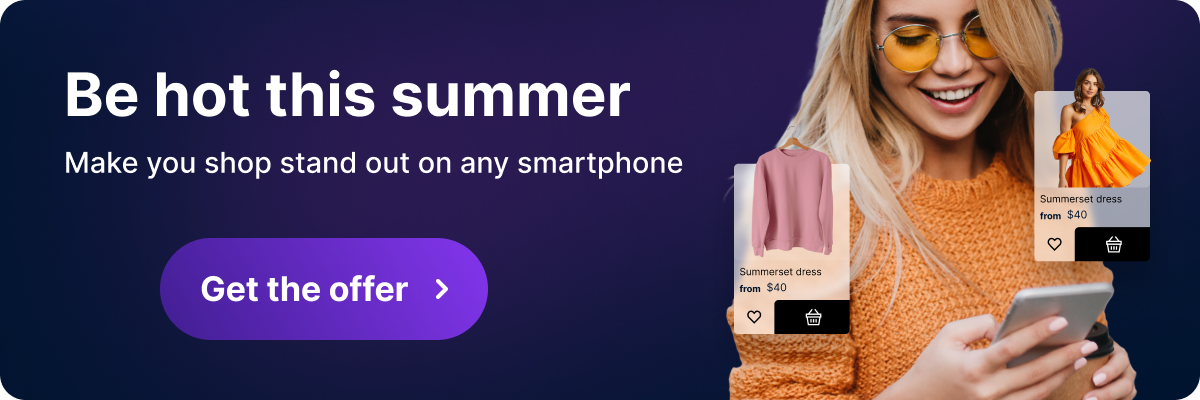
Challenges in the fashion industry
Building a fashion brand and making achievements in the $1.53 trillion worth of industry (Statista, 2023) is not a simple process. The real battle begins when you think it’s over and you’ve finished what you started first. The fashion industry is the most competitive industry of all, and it’s constantly changing. With every new change, millions of brands are thrown into the fire. Competition is healthy, but staying on top of the game and being ‘better than others’ isn’t simple.
Although all challenges in the fashion industry could be divided into several categories, the reality is that every brand has unique challenges. Some brands are solving them with ease, but others are struggling to sleep peacefully after a long working day. Speaking with brands for this research helped us understand the main issues for SMBs and how they are dealing with the current unstable economic situation. Let’s dive into their biggest challenges!
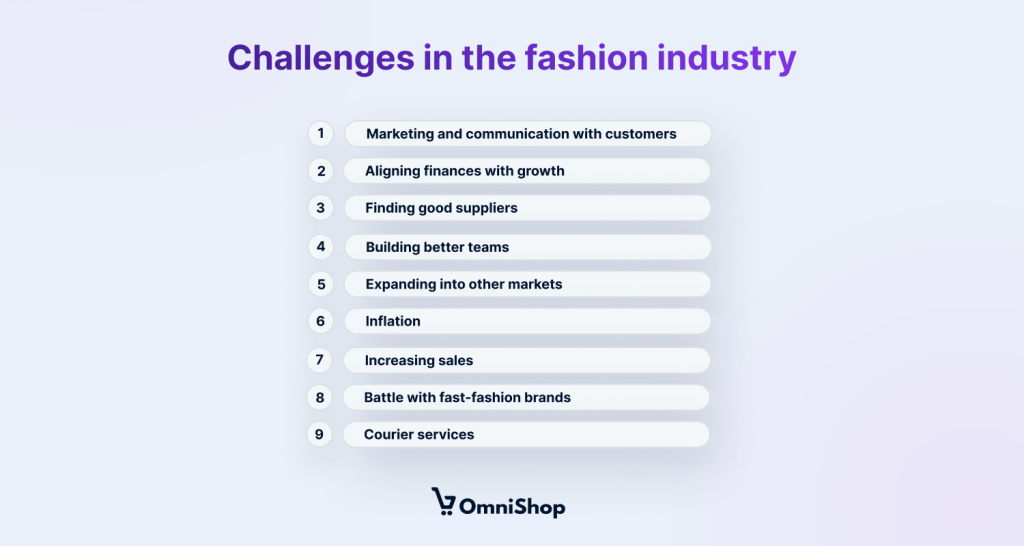
Marketing and communication with customers
E-commerce owners face challenges in marketing and communication with their customers. They are communicating, but it’s not only about posting on social media – it should be done on a deeper level. With traditional brick-and-mortar stores, customers can interact with people and ask questions. But, in the online space, this is not always possible.
So, e-commerce owners must find ways to fill the gap between their customers and their products to build trust and loyalty. It can help brands differentiate from millions of others. Consistent and transparent communication with customers is important for building trust and loyalty. According to a study (Twilio, 2021), 9 out of 10 customers want to receive updates on the status of their orders.
For purposes of this research, some participants shared that they struggle to connect with their customers. With many channels available, they find it difficult to focus on the most important ones. This usually forces them to split their budget and efforts, leaving them in the dark. Also, they shared that they would like to have a more meaningful connection with their customers.
Participants are aware of the importance of communication, but they said that they find it hard to keep up with changes in digital marketing, which require excessive time and budget. Setting the marketing strategy is easier if you have a team behind it to take care of it, but it’s hard to be a one-man show for everything if you’re a small business owner.
Ways to solve this challenge
Prioritizing communication channels is a way to narrow down the focus and not get lost in the ocean. Also, sending personalized email newsletters and having exceptional customer support will be very helpful for customers, and they would appreciate it. Some brands shared that they built communities that helped them connect with customers and make them loyal.
Aligning finances with growth
E-commerce owners face a challenge when it comes to aligning their finances with their growth. They must balance investing in their business growth and having enough budget to keep operations running smoothly.
It is essential for e-commerce owners to understand the financial implications of their decisions. They should plan ahead for potential growth opportunities. Also, they must be aware of the risks, such as cash flow issues or unexpected costs. Being prepared to address them accordingly may save them time and nerves.
Can you believe that a brand could be built with almost zero investments? In today’s digital age, social media and online platforms have made it easier for individuals and small businesses to establish a brand presence without incurring high costs. These options include creating a website or social media page, producing content, engaging with followers, and utilizing word-of-mouth marketing. However, building a strong and sustainable brand may require investment in the long run.
This research gave us the opportunity to hear about the early beginnings of a small business. But, having no budget right from the beginning led to bigger problems in the future. Budget restrictions might slow down the growth. As some of the research participants shared with us, having no budget at first affected setting a strong foundation. Later on, brands needed more resources for growth which couldn’t be provided overnight.
Tips to align your finances with growth
The challenge of aligning finances with growth can be overcome by setting clear financial goals. This can include revenue targets, profit margins, and cash flow projections.
Also, allocating funds to areas with the most potential for growth, such as marketing, product development, and technology infrastructure, can help ensure that finances are aligned with the growth trajectory of the e-commerce business.
Finding good suppliers
It is not easy to find reliable suppliers who can provide quality products at a reasonable price. If the supplier is located in a different country, it can be difficult to establish trust and build a long-term relationship with them. When selecting suppliers, e-commerce owners must consider cost, quality, and delivery time. They should also look for reviews and background checks before committing.
Brands figured out that to gain customers’ trust, having high-quality products is necessary. The whole manufacturing and production process depends on suppliers. Finding quality fabrics and materials is hard if you don’t have a supplier to support your needs. Local suppliers often choose to take a break, and their supply stock depends on the season. Also, they often restrict brands with a minimum quantity, which is troubling for brands selling capsule collections.
Finding organic materials is getting harder as there are more brands focusing on sustainability. Organic cotton is difficult to find, and even if you find it, the variety of color choices is very limited. Some brands have an ‘on-demand’ ordering system, so they know how much material they’ll need in advance, making it a little bit easier.
Apart from problems with the minimum quantity per order, geo-political situations affect imports from different countries, which is also a huge problem for brands. Some participants even got the idea to import the needed materials to avoid difficult steps in the supply process.
What can you do about this?
Overall, the supply process is very complicated, so finding a supplier that will meet the brand’s needs is important. For example, industry trade shows and conferences are a great way to meet potential suppliers in person and learn more about their products and services.
Before entering into a partnership with a supplier, it’s important to establish clear expectations and requirements for product quality, pricing, delivery times, and other key factors. This can help ensure that the supplier is aligned with the needs and goals of the e-commerce business.
Building better teams
There’s a rumor that finding a good worker in the fashion industry is hard. That’s not entirely true, but some participants said that they are struggling to build good teams that will grow along with the brand. Having a good team to back up a brand’s growth is great on both ends. According to a study by Forbes, companies with engaged employees outperform those without by 202%.
In the world of e-commerce, building better teams is one of the biggest challenges that business owners face. As the competition increases, building teams that are efficient and capable of handling the challenges associated with running an online store becomes increasingly important. To achieve this goal, e-commerce owners must understand how to leverage technology best and create a team structure that fits their business model.
People that are there from the beginning fully understand the core values, but it’s harder to share them with newly hired people. Some owners of small businesses don’t have a massive production and the need to stock items, so they usually hire seasonal workers. Finding them for each season is not an easy task.
Some brands have limited edition collections that offer delicate items that require hand stitches. For hand-sewn pieces, technology can’t help, and finding high-skilled workers is very important but difficult.
Here’s what you can do
Some participants shared that they tried to master the skills that are helpful to their business but also decided to outsource whatever they could. For example, some of them are in charge of web shop maintenance, while others hire outside teams. But, it can be time-consuming, so finding a good tech partner may be a good solution.
Expanding into other markets
As an e-commerce owner, expanding into other markets can be a daunting task. It involves understanding the needs and preferences of the target market.
The challenge of breaching other markets also involves developing a new market strategy, building relationships with partners and vendors, and ensuring that all legal requirements are met.
Moreover, e-commerce owners must also consider how they will handle logistics, customer service, and payments when entering a new market. All these factors must be considered before deciding to expand into other markets.
The most heard advice: start local and then spread your brand worldwide. Each participant first decided to start selling their products in the domestic region, but some knew that they would focus on other markets eventually.
But, no matter how good sales are in your country, it doesn’t mean they will be that good in other markets. Some of the markets, like the United States, are harder to breach. If some brands sell on Etsy, it may be easier, but that’s no longer a thing due to recent policy changes. Also, customers don’t have the same shopping habits as the familiar ones in local areas.
Example of market unpredictability
One of the participants shared that their sales are way better in the United Kingdom and Western Europe than in their origin country. They combine ethnic and modern designs that are popular in other markets, but locals are less interested. Local people may be familiar with the cultural influences and design elements. Therefore, it may lead to less interest in purchasing them. Also, the marketing approach used by the fashion brand may be geared more toward a foreign audience, which may not resonate with local people. So, if the brand wants to succeed in different markets, it can adjust its marketing strategy to appeal to all of them.
Inflation brings uncertainty
Is there anyone that hasn’t been affected by a situation that is pretty much the same worldwide?
Inflation brings a lot of uncertainty to the e-commerce industry, making it difficult for owners to manage their businesses and stay competitive. Prices of goods and services are rising, meaning customers are paying more for the same product or service. This can lead to decreased sales, as customers may not be willing to pay higher prices. Additionally, it can make it hard for e-commerce owners to predict future costs and plan accordingly.
Although we decided to leave the Covid19 era behind us, almost every participant mentioned how hard it was for them to survive the last couple of years. Some of our participants even started out during that time and made amazing results. But they don’t know how stable their businesses will be in the future. People are worried about geo-political situations and the world’s uncertainty, which makes them more cautious.
Be adjustable
As a result, they need to be prepared for any potential changes in the market and be able to adjust their strategies quickly. People that are at the center of business news and trends might notice that businesses are getting more cautious than ever and trying to accumulate as much money as possible. Crises are always present, and many businesses are currently in saving mode. During hard times, all brands must come back and think about the core values of the business itself – their customers. Don’t forget the ones that made your business grow.
Increasing sales
The e-commerce industry is growing rapidly, and the fierce competition makes it difficult for online store owners to increase their sales. As an e-commerce owner, it can be challenging to keep up with the changing trends and find ways to increase sales.
Having more sales is and always will be a challenge. Every participant mentioned that they’re constantly working on increasing their sales by focusing on different strategies. Having consistent sales is the top priority for small businesses. Some of the participants are building brands from scratch and are currently in the form of a side job, so more sales would mean a change of focus.
Ways to increase sales
In order to stay ahead of the competition, e-commerce owners need to understand how customers interact with their stores and how to use data-driven strategies to optimize websites for higher conversion rates. They also need to take advantage of digital marketing techniques, such as SEO, PPC, social media marketing, and email campaigns, to drive more traffic and sales.
If brands focus on customers and their shopping experience, they might notice how often they return to purchase again. Returning customers are worth a lot to a business. Thankfully, it’s easy to spot them in the analytics. That may be a good sign that a brand should consider lifting its business to another level and building a mobile app.
Battle with fast-fashion brands
Although customers are turning to more sustainable brands, fast-fashion brands are still taking over the scene. Some e-commerce owners have faced a difficult challenge in recent years: the rise of fast-fashion brands. These brands offer trendy, affordable clothing that is often produced quickly and cheaply, making it difficult for small brands to compete. This has resulted in an increased need for them to find creative ways to differentiate their products and stand out from the competition.
Our participants that decided to ‘go green’ are challenged to explain why people should turn to more eco-friendly products. Eco-conscious materials like Tencil and organic cotton are more expensive than plastic derivatives usually found on some fast-fashion brands’ labels.
Producing sustainable items is not an easy task. Finding high-quality materials that are good for the environment is harder and more expensive, and brands struggle to balance and set prices to justify their expenses. Customers that choose them over popular brands usually get it, but still, brands are trying to educate customers and inspire them to buy with more consciousness.
Here’s why you shouldn’t worry
The best advice slow fashion brands could get is to keep their heads up.
Fast fashion retailers reported a 46% drop in sales since 2020 (TheRoundup, 2023). Consumers are getting more educated about the pollution and impact of fast fashion and are buying more consciously.
Also, sustainability plays a role in customer loyalty. Customers are getting more interested in seeing how companies take the initiative and incorporate sustainable steps. A mobile app for e-commerce brands could act as a tool for creating a bond with eco-conscious customers. For example, brands can offer discounts to users who make sustainable purchases through their mobile apps. This can encourage people to make environmentally conscious choices and build loyalty.
Courier services
Courier services are an integral part of the e-commerce industry. They provide a reliable and efficient way to deliver products to customers. However, courier services have become a challenge for e-commerce owners as the industry grows. This is because they need to find ways to ensure that their products are delivered on time and in good condition. They also need to ensure that their customers are satisfied with the service provided by the courier company. A study by ShipStation found that 60% of customers say that delivery speed and cost are the most important factors when making an online purchase.
The advice we got from one of our participants:
‘Choose the cheapest option available because you’ll have problems with every service no matter the costs.’
They find it really hard to find a reliable courier service. After all their efforts to reach their target customers, brands aren’t relaxed when it’s time to ship the order. Lost packages, delays, and late package arrivals are only the tip of the iceberg.
For sustainable brands, it’s not only about the arrival time. For example, finding a service that won’t wrap up its products in non-recyclable plastic bags is not so easy, so they often offer more alternative types of deliveries.
Approaches to fight this challenge
Some participants shared that they delivered packages themselves to ensure they arrived on time. The best option is to arrange pick-ups and deliveries to physical stores.
Research highlights: the most inspiring brands
These interviews with fashion brands moved us a little bit closer to the industry. We had the opportunity to talk with amazing people and listen to their inspiring stories. Lucky for us, it didn’t stop there because we also got the opportunity to help them by sharing our experience and advice we collected throughout the work in e-commerce.
While all e-commerce fashion brands have made valuable contributions to this research, we had not such an easy task of choosing some of them for our spotlight section.
Roberto Baressi
Listening to Dragana, the owner of Roberto Baressi, share her story and passion for the brand was truly inspiring. Seeing how much passion she pours into every aspect of her business, especially because it’s a family-run operation, is amazing.
Her dedication to timeless designs and each customer is inspiring. When the owner invests themselves fully into the brand, customers can feel it, and that’s what makes Roberto Baressi so special.
The Roberto Baressi team goes above and beyond to create luxurious and comfortable items, selecting only the finest fabrics and offering custom-fit shirts. With a focus on customer satisfaction and a personal touch, it’s more than just a clothing brand.
It’s no surprise that Roberto Baressi quickly became a go-to destination for people seeking elegant fashion. We were honored to be able to help them strengthen their presence on the market by building a mobile app for their customers.
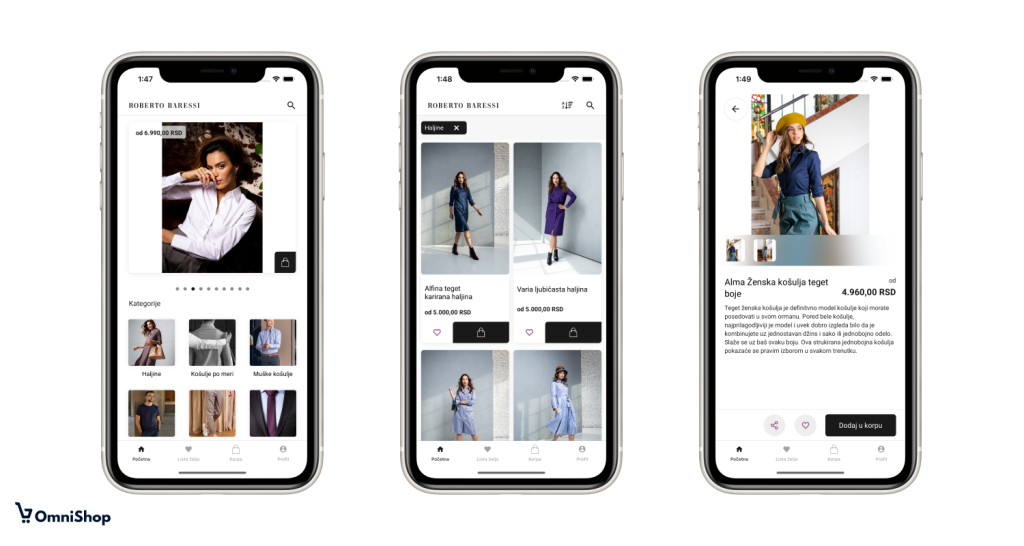
Helena Scrittore
Jelena’s journey to becoming a successful designer is a testament to her determination and creativity. Despite not having a formal education in fashion design, she pursued her passion for clothing and created a brand known for its elegant and timeless designs.
Helena Scrittore is based on her love for fashion and desire to create beautiful clothing that makes women feel confident and stylish. It has a strong network of loyal customers who appreciate the quality and attention to detail that is put into each piece. Worldwide success results from hard work, perseverance, and dedication.
Jelena’s story is an inspiration to anyone who dreams of pursuing their passion and turning it into a successful career.

Gymster
Gymster brand is committed to producing high-quality clothing that can withstand even the most intense workouts while also being stylish enough to wear outside the gym. This brand is owned by Aleksandar, who knows what it takes to succeed. His previous experience with a family business combined with a small but dedicated team has built this brand which entered the e-commerce world loudly.
With a focus on performance, comfort, and style, every piece of clothing in this collection is carefully designed. The customers appreciate the high quality and feel that the whole brand cares about them.
We heard only part of their future plans, and we can only tell that we can’t wait for them to start. With the OmniShop mobile app to support their plans, we’re assured that it will succeed.
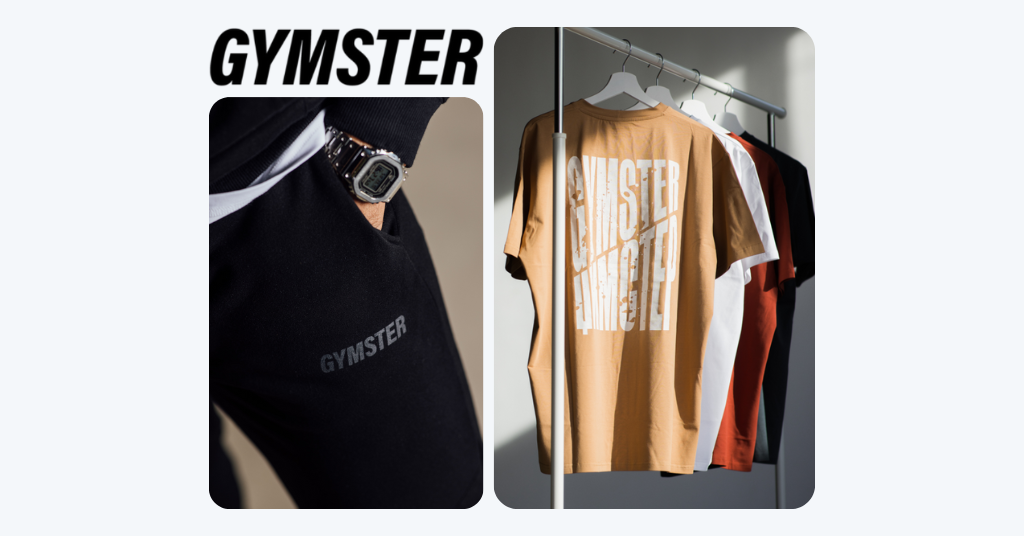
Teyxo
Teyxo is a brand of clothing for women that is stylish and trendy. It is built on a foundation of hard work and dedication by its owner. Lara, an actress, started the business alongside her mother as a side job, but it quickly turned into a full-time job.
The most interesting fact is that their loyal customers provide almost 50% of their total revenue, making customer satisfaction their top priority.
The owner invests herself heavily in this business, knowing that customers appreciate the dedication she puts into it. Every step she takes is carefully thought out and executed with the goal of keeping her customers happy and coming back for more. With this level of commitment, it’s no surprise that this brand has become a go-to for women who want to look and feel their best.
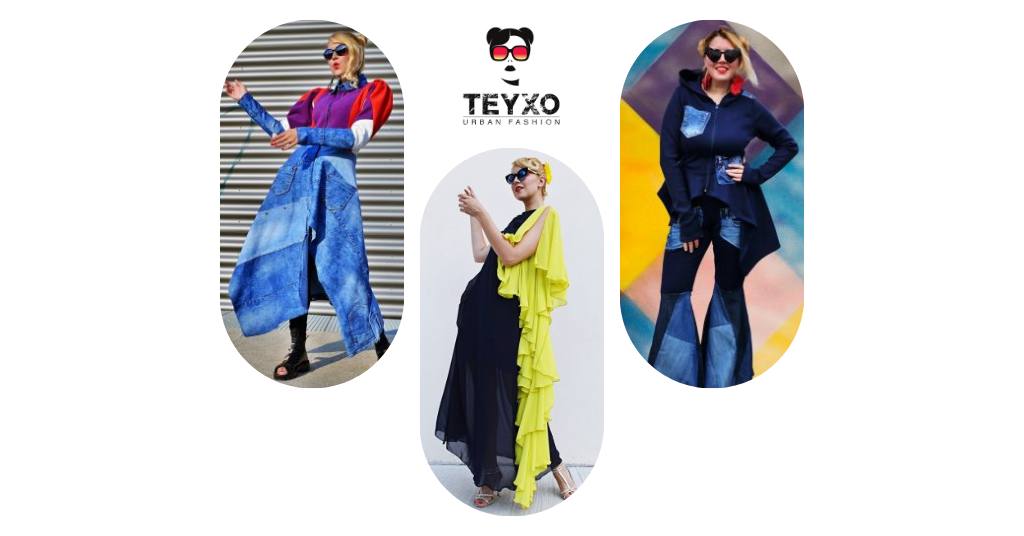
Tied Up
Tied Up is a brand of elegant bow ties that is all about being unique and different. The owner of the business, Slađan, knows the soul of the business and has worked tirelessly to create collections that stand out. What started as an idea has grown into a brand that is known for its colorful and distinct patterns.
They understand that their customers are the lifeblood of their business, and they strive to create a shopping experience that is both enjoyable and rewarding. From the moment you visit their website to the moment you receive your order, every step is taken with care and attention to detail.
We had a chance to meet with them at several educational events, so it’s not surprising that they’re aiming high. We’re happy to be the support on their journey.
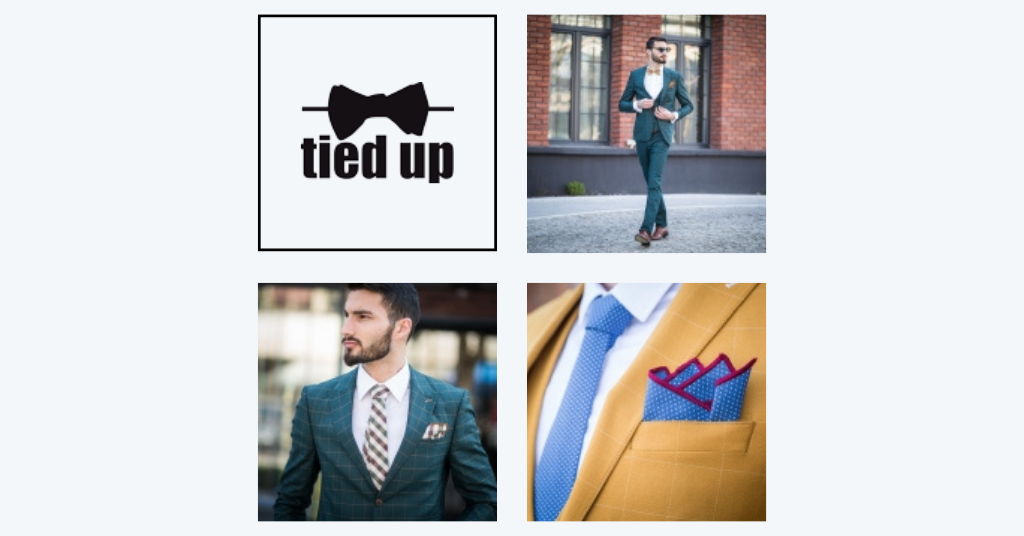
Thema
Thema is an eco-friendly kids’ clothes brand. The brand successfully promotes a sustainable future. The owner of this brand, Lana, is very passionate about environmental conservation. She decided to switch from the corporate world to entrepreneurship to make a difference.
She has brought eco-consciousness to this brand and Thema’s clothes are stylish and sustainable. She believes that no one needs an abundance of clothes and that people should be more conscious about what they buy and how it affects the environment.
This brand focuses on creating high-quality clothes that are durable and made from eco-friendly materials such as certified and 100% organic cotton. This brand inspires others to make more conscious choices regarding what we wear. After hearing their story, we’re thinking about our personal choices regarding clothing and sustainability.
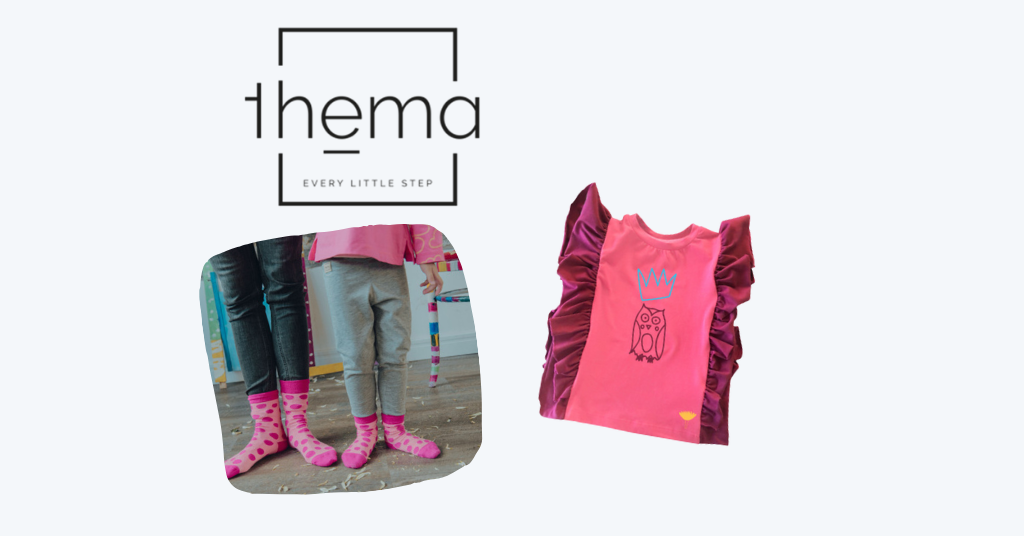
Skizo
Skizo is not an ordinary shoe brand. They are making waves in the fashion industry for their innovative and sustainable approach to shoe production. Skizo is solving environmental problems by using materials science to create shoes made from plastics found in the ocean. This not only helps to reduce plastic waste but also creates unique and stylish shoes for their customers.
Additionally, the brand allows customers to customize their own pair on demand, which helps to reduce waste by ensuring that only the wanted and needed shoes are produced. Skizo positively impacts the fashion industry by prioritizing sustainability and innovation and paving the way for future generations.
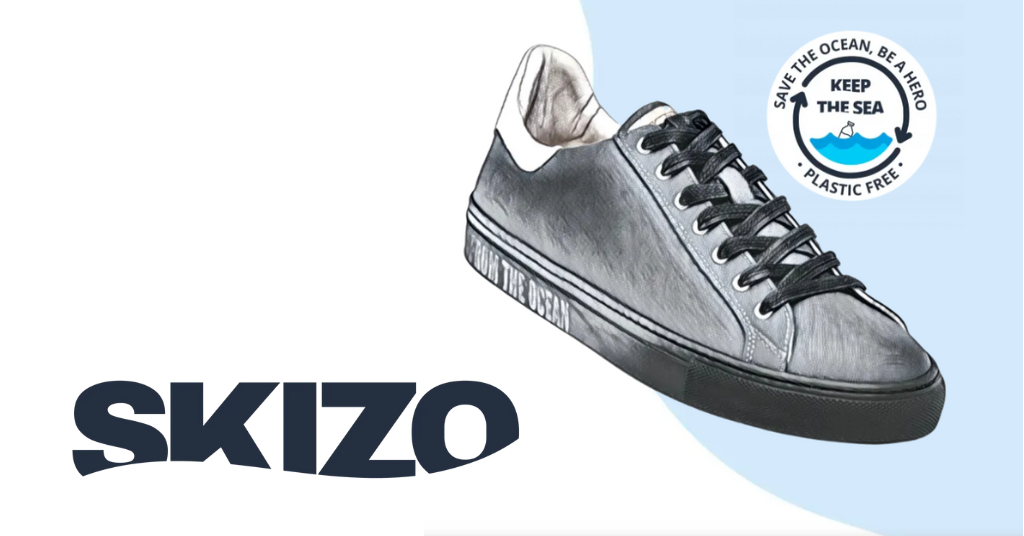
Hayley Joy
Hayley Joy is an inspiring South African brand that has touched the hearts of many women around the world. The founder, Hayley, started creating plus-size clothes while in college. Her passion for designing clothes that make women feel confident and beautiful has grown into a successful business with its own factory.
Hayley’s commitment to making a difference is heartwarming about this brand. Not only do they make clothing items specifically engineered to fit different types of bodies, but her dedication to each customer is amazing. The fact that they design and print their own fabrics is a testament to the passion and creativity that drives this brand.
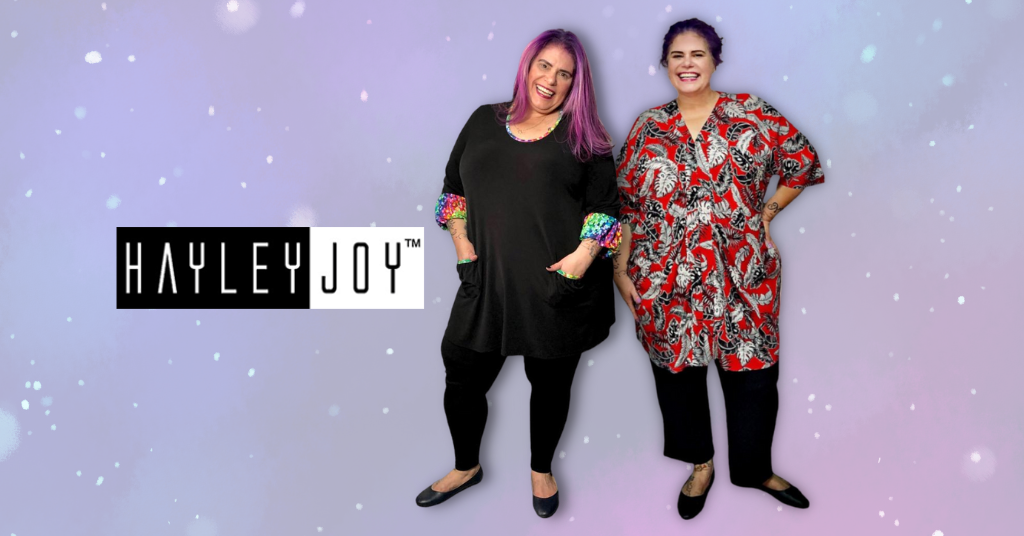
Miss Polyplexi
Miss Polyplexi is a brand that is deeply committed to creating high-quality, handmade bags that are unique and special to each woman who carries them.
The brand’s founder, Vasiliki, is a passionate and creative person who learned crocheting from her mother and loved handmade creations. The team follows the belief that a woman’s bag is more than just an accessory. It is a reflection of her personality and carries her secrets and memories. Miss Polyplexi’s heartwarming philosophy reminds us of the beauty and power of handmade art.
They believe that sustainability and handcrafted quality can coexist. They strive to have a positive impact on the planet and create beautiful and unique bags. We were impressed by the brand’s efforts to prioritize sustainability, and we hope that more businesses will follow in their footsteps.
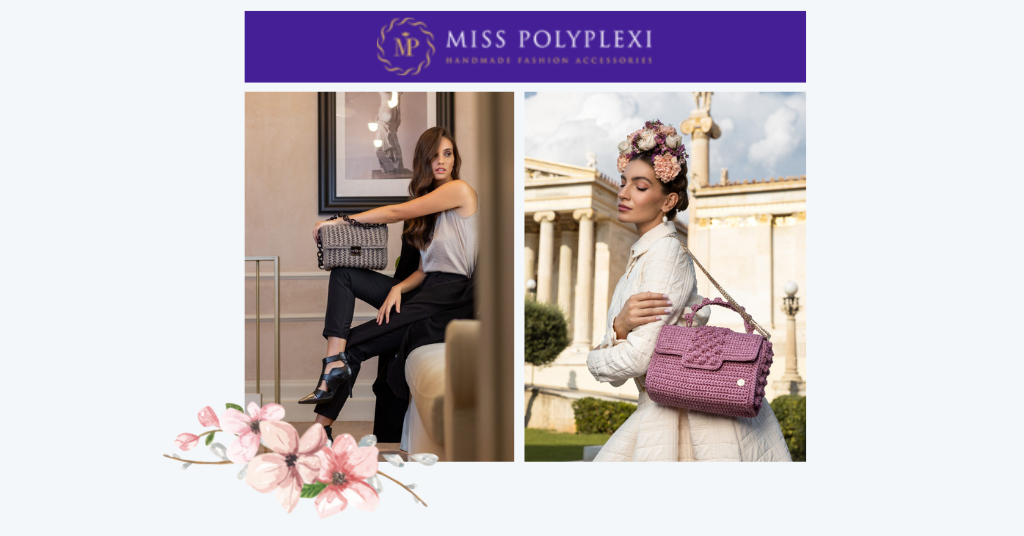
PLATFORM
PLATFORM was born as an idea by its founder, Stacy. It brings together passion and creativity in a unique way that catches the attention of every customer. The brand’s story began as a concept boutique with only a few designers who sold their pieces, but it quickly grew into a larger store featuring 20+ brands. Every brand shares the same values and unique design, distinguishing Platform from other brands. Listening to Stacy’s path to success transferred the heart and soul of the brand itself.
Since Platform is a place for emerging designers, it easily became the no. 1 station for many people. We were thrilled to have them participate in our research and loved hearing their story of growth. We hope more businesses will follow their example and positively impact the environment.
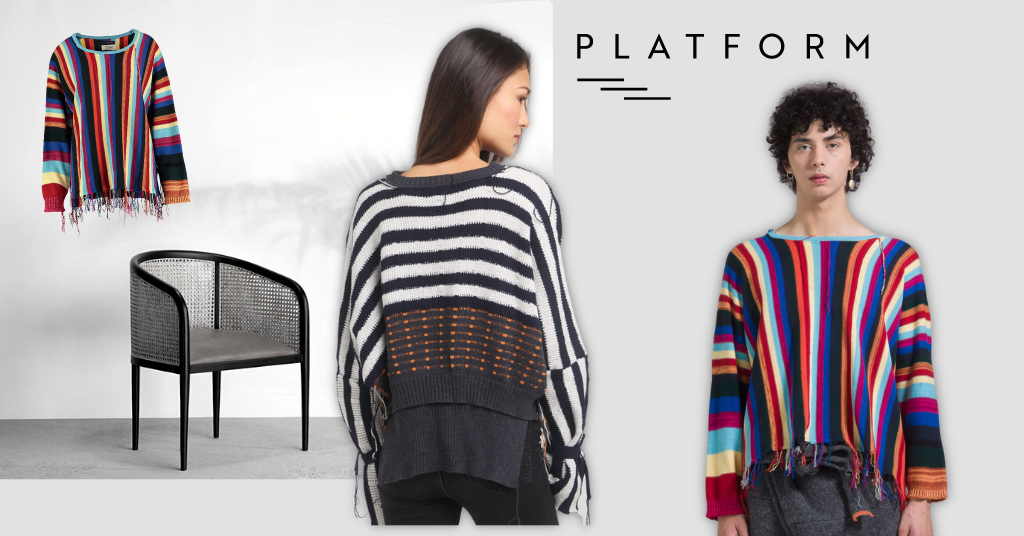
JAGGS
The JAGGS brand has a focus on self-expression and individuality. Combining ready-to-wear and bespoke custom-made items with bold prints got attention from customers worldwide. The business is focused on creating clothing items tailored to fit perfectly and reflect their passion for fashion. The brand’s owner, Alexandre, has had a clear goal from the beginning of their journey. It’s worth noting that Alexandre started the company just one year after graduating and has quickly grown the team to include 17 people. This impressive feat speaks to his passion for the brand’s vision.
With a huge interest in AR technology, they are launching a smart mirror to help customers visualize their looks. It’s clear that they understand the importance of keeping up with technological advancements in order to succeed. This mindset is reflected in their innovative approach to fashion. They recognize the need to embrace new technologies quickly and effectively, which is evident in their upcoming launch. Their focus on customer experience is worth applause.
By constantly pushing the boundaries of what’s possible in the world of fashion, JAGGS is leading the charge for a more innovative future.
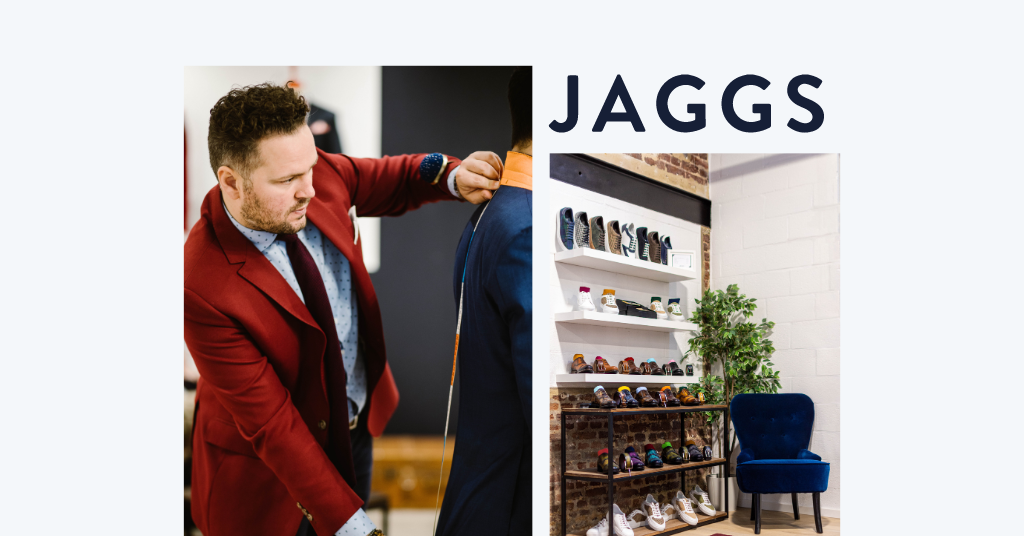
Exterra
The rich tradition and the commitment to high quality – two things that describe the Exterra brand. What sets them apart is their focus on the needs of their customers, as seen in their wide range of clothing designed with special attention to detail.
Behind the brand’s success stands a creative team working daily to produce special cuts and prints, carefully selected colors, and models. Exterra’s dedication to customer satisfaction is clear in its mission and vision. They strive to please every customer, with the goal of creating a wardrobe that you can wear with pride. They have over 100 dedicated employees working to produce the highest quality product. Exterra encourages a bold attitude towards life, freedom of expression, and creating a better reality.
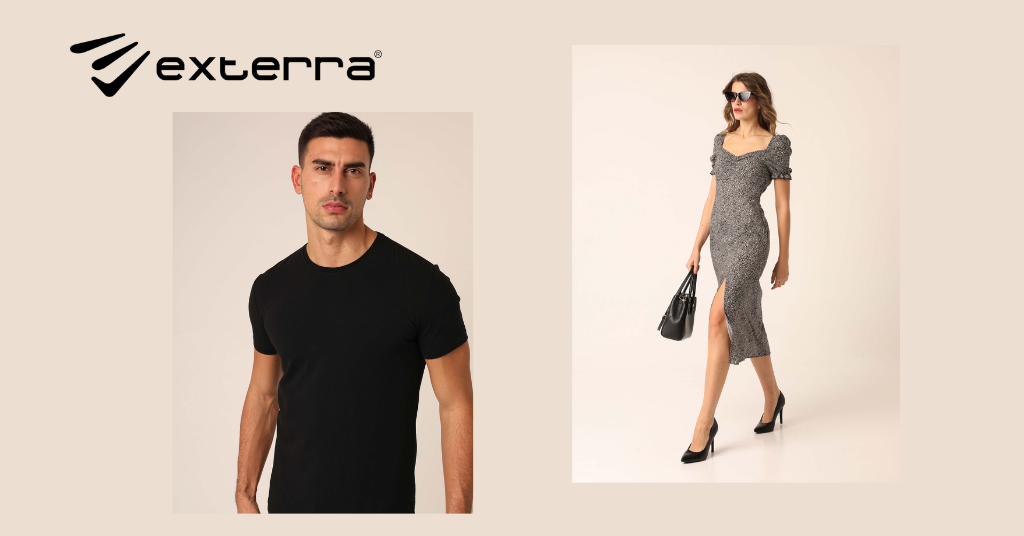
The biggest THANK YOU
As we wrap up this blog post, we want to give a big shoutout to all the fashion brands participating in our research. We know your time is valuable, so we appreciate your willingness to share your experiences and insights with us.
Your contributions have been incredibly helpful in giving us a better understanding of the fashion industry. We’re excited to share what we’ve learned with a broad audience.
We hope you also had a great time, and we look forward to potentially collaborating again in the future.
Thank you so much for your support from all members of the OmniShop team.
Let’s book a 30-min mobile strategy session and give your shop a boost.
Let’s book a 30-min mobile strategy session and give your shop a boost.


